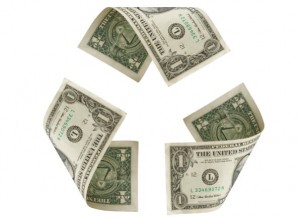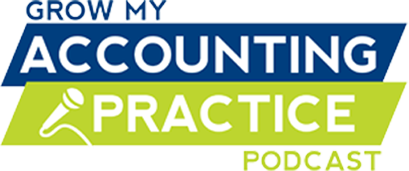Most entrepreneurs have two basic goals: (1) make money and (2) make more money. Considering the fact those are pretty simple, well-defined goals, not everyone seems to have the same amount of success achieving them. However, there are several tried and true models for changing that curve and helping you increase your revenue.
In addition to the product tier model I talked about last week, one of my favorites, is to implement a recurring billing model. This is also referred as the subscription model.
It doesn’t matter whether you’re selling a product or a service. What matters is that if you’re only charging a set price, or project fee, then you are definitely leaving money on the table. And leaving money on the table makes it far more difficult to reach the two goals we talked about earlier—(1) making money and (2) making more money.
Get Started To Implement Recurring Billing

To start picking more of that money up off the table, you need to start charging recurring fees. It’s that simple. This business model works for a lot of reasons. You and I both know that achieving the first anything is the hardest. That’s even truer when it comes to making that first sale to a customer. However, once a customer has your product in hand, or you’ve performed a service for them and they’re happy campers, they’re more likely to return and buy again and again. That first sale has given them some confidence in your product or service, and some understanding of who you are. That all translates into trust, which translates into more sales, if your recurring fee model, is in place.
So, the first reason to go to a recurring model is that it is much easier to sell because you’ve already sold the first item. Now it’s time to strengthen that hard won trust. Since people who go to a recurring model already trust you it’s time to keep that trust coming. That’s not too difficult because when someone goes to a recurring model, the price is immediately cheaper, which helps the customer to feel safer. They also feel good about the purchase every month, and they really feel good about getting a deal. (Who doesn’t love a deal?)
Doing It By The Numbers
Recurring sales models look something like this: Take, for example, a product for which you are charging $100, like maybe a case of bacon-in-a-can. You start offering your bacon-in-a-can at a recurring price of $10 per month. To the consumer, the first payment is already $90 cheaper! Ten dollars a month is a safer and more comfortable amount of money for them to spend, especially if they’re expecting a world apocalypse and they don’t want to be without their bacon. Of course, after 10 months they will have paid
$100, and after four years, if the world hasn’t ended for example, they will have paid $480. The demand on your service or products actually goes down, with recurring plans. Still not convinced? Consider gym memberships. At $29 to $49 per month, it is a no- brainer to join. But many people are simply in a “set it and forget it” mentality. They join, they pay, and they end up continuing to pay for months and years to come. But they don’t actually use the gym. Gyms actually expect this! Could you imagine if everyone who had a membership actually showed up at the gym? They would never have enough room to accommodate everyone. Your business would be much more successful.
But they know, since customers have the comfort of using the resource whenever they want it, that they don’t feel rushed to use it. And, in most cases, a good percentage of people never do end up using it. It is the ultimate mañana syndrome.
Why It Works
Charging a recurring fee works for two reasons. First, you end up creating a predictable revenue stream. Sure, some people will cancel or simply stop paying. But, overall, you still know how much money is coming in each month. And if you know how much you are going to make, you’re better able to control your business expenses to make sure you are profitable.
Secondly, a recurring fee, especially if you offer a service, encourages efficiency. You are getting paid the same amount every month to do the service you provide, so now your focus is on doing the best job you can, as efficiently as possible. Before, you got paid only for those things that you did, which may have even been on an hourly basis. You were naturally more motivated to find work and maximize your hours. But now your interests are totally aligned with the customer. Your focus is on doing it right and doing it quickly.
Getting Started
You can start a recurring billing program with any kind of business. Shoot, you could have the ultimate consumable – say, ice cream – and turn it into a recurring program. You could charge a monthly fee for premium access to all your new flavors. Only members would get access to the “secret freezer” of new flavors, and they would, of course, be paying you something every month for that privilege.
So get the wheels turning and start working on your recurring model. Meanwhile, I will try to figure out a way to charge you a recurring fee for reading my articles. I kid, I kid (kind of).














There is an airline startup trying to do a recurring billing on an “all you can fly” program for only $1000 month. I wonder if it will take off? (sorry, just had to say that)
Here is the article: http://blogs.wsj.com/venturecapital/2012/06/06/surf-air-the-all-you-can-fly-airline-readies-for-takeoff/
This is actually a really simple idea to implement and a REALLY good one as well. It has got me to thinking on how I can implement this into my new PC repair business. Man Mike you just keep my brain going!
LOL. Thanks, Jared!
Hey Mike,
Terrific piece. Back when I ran my tech services company, we offered preferred project rates for any customers that had us on retainer for ongoing maintenance and that seemed to work reasonably well.
I think what worked even better was the peace of mind they got from knowing we had their back, 24/7 🙂
Thanks for sharing that Trent. What size discount did your customers get?
If I recall correctly, they got about a $20/hour discount on all project work.